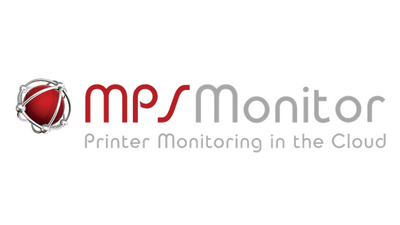by Scott Muniz | Nov 19, 2020 | Security, Technology
This article is contributed. See the original author and article here.
Original release date: November 19, 2020
Google has released Chrome version 87.0.4280.66 for Windows, Mac, and Linux to address multiple vulnerabilities. Some of these vulnerabilities could allow an attacker to take control of an affected system.
The Cybersecurity and Infrastructure Security Agency (CISA) encourages users and administrators to review the Chrome Release and apply the necessary updates.
This product is provided subject to this Notification and this Privacy & Use policy.
by Scott Muniz | Nov 19, 2020 | Security, Technology
This article is contributed. See the original author and article here.
Original release date: November 19, 2020
Drupal has released security updates to address a critical vulnerability in Drupal 7, 8.8 and earlier, 8.9, and 9.0. An attacker could exploit this vulnerability to take control of an affected system.
The Cybersecurity and Infrastructure Security Agency (CISA) encourages users and administrators to review the Drupal Advisory SA-CORE-2020-012, apply the necessary updates, and follow the additional recommendation.
This product is provided subject to this Notification and this Privacy & Use policy.
by Scott Muniz | Nov 19, 2020 | Security, Technology
This article is contributed. See the original author and article here.
Original release date: November 19, 2020
Cisco has released security updates to address vulnerabilities in multiple products. A remote attacker could exploit some of these vulnerabilities to take control of an affected system.
The Cybersecurity and Infrastructure Security Agency (CISA) encourages users and administrators to review the following Cisco Security Advisories and apply the necessary updates.
For updates addressing lower severity vulnerabilities, see the Cisco Security Advisories page.
This product is provided subject to this Notification and this Privacy & Use policy.

by Contributed | Nov 19, 2020 | Technology
This article is contributed. See the original author and article here.
MPS Monitor, integrated with Universal Print, is the first cloud platform to bring together a single, easy-to-implement, and cost-effective managed print service (MPS) solution that fulfills the most important needs of dealers and customers.
Print management and device management are essential parts of any MPS offering. Until now, there has been no platform on the market that provided multi-brand remote monitoring and management (RMM), user management, job tracking, rule-based printing, and pull printing, all in a single cloud platform. Having different applications for managing various aspects of the same fleet is far from being optimal. This is even more true with a large percentage of the workforce currently working from home. Moving all print-related processes to the cloud is a compelling and urgent need for customers and MPS providers—and a modern and optimized MPS environment is ideally based on a single cloud platform to manage devices, users, print jobs, security policies, reporting, and analytics.
This is even more true in the current work from home (WFH) environment, where moving all print-related processes to the cloud is a compelling and urgent need for customers and MPS Providers.
MPS Monitor integrated with Universal Print is the first cloud platform that brings all these requirements together into a single, easy to implement and cost-effective solution that fulfills most of the Managed Print Services needs of dealers and customers.
Why is MPS Monitor integrating Universal Print?
MPS Monitor is a leader in the RMM space, with about one million devices monitored and hundreds of thousands of data collection agent (DCA) connectors installed with customers all over the world.
This integration aims to provide to MPS Monitor’s users all the Universal Print features by leveraging the existing MPS Monitor infrastructure, thus enabling a seamless and fully integrated user experience from a single web portal with single sign-on access.
Customers with MPS Monitor DCA installed on their network do not need any additional software or hardware component, as the DCA performs all the Universal Print tasks.
Reporting and business intelligence tools in MPS Monitor will integrate user and print job information from Universal Print, joined with existing device data, to provide a full and comprehensive view of print costs, usage patterns, and predictive analytics.
What will you get from MPS Monitor Universal Print Integration?
- A single web application to manage printing devices, users, and print jobs
- A single sign-on experience that can be accessed using your Active Directory user account – no proliferation of systems and different credentials
- No other connector installation – the MPS Monitor DCA does all the work
- No manual printer registration and configuration on Azure – MPS Monitor does this for you
- Users and job reporting integrated into the self-service Microsoft Power BI platform integrated with MPS Monitor Portal
- Pull printing via mobile app
How does it work?
You can enable Universal Print for all your existing customers from within MPS Monitor, as long as they use Azure Active Directory (Azure AD) services or Microsoft 365. MPS Monitor automatically syncs with Azure AD to activate the Universal Print tenant. You will not need to install any additional connector, as the MPS Monitor DCA is automatically enabled to work as a Universal Print Connector.
You can configure MPS Monitor to register for you in Universal Print every device you monitor, and activate the offering for print queues, pull printing, and all Univesral Print functionality.
How can I get more information on MPS Monitor and Universal Print?
If you are an existing MPS Monitor user, you can contact the MPS Monitor support team for your region. If you are new to MPS Monitor, please go to www.mpsmonitor.com and register for a free trial.

by Scott Muniz | Nov 19, 2020 | Security
This article was originally posted by the FTC. See the original article here.
Have you gotten your Economic Impact Payment yet? If you haven’t, time is running out. You have until November 21 at 3pm Eastern Time to enter your information with the IRS.
Brought to you by Dr. Ware, Microsoft Office 365 Silver Partner, Charleston SC.



Recent Comments